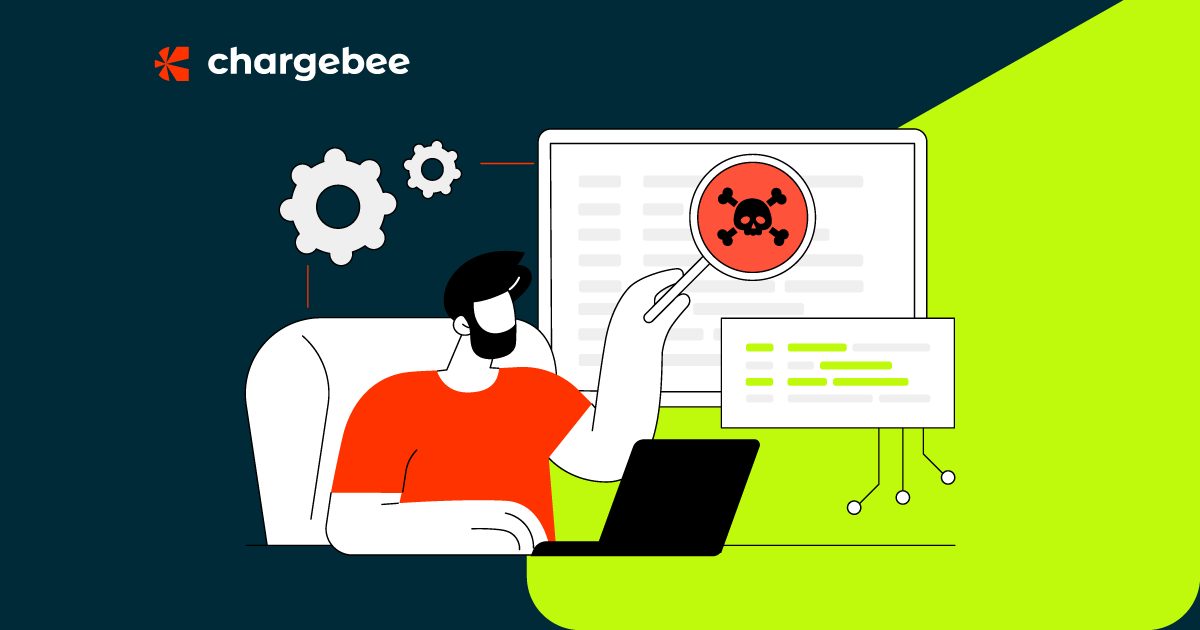The myth about Online Fraud is that if you do business correctly, it will never happen to you. Actually, nothing could be further from the truth. We’ve all heard the depressing statistics about the relationship between chargebacks and online fraud; 86% of chargebacks are fraudulently placed, and only 14% of consumers bother to contact a merchant before initiating a chargeback. 58% of consumers never bother to contact the merchant at all, instead choosing to work directly with the bank throughout the entire process.

Source: ChargeBacks911
Heartland Payment systems estimates that around 0.01% of all transactions end in a chargeback. The process of disputing charges is largely designed to protect consumers against fraud, stolen credit cards or other erroneous charges. While it’s relatively easy for a consumer to file a dispute against charges on their card, it’s much harder for a subscription business to defend themselves.
A single phone call from a card-holder with ill intent can amount to hours of paperwork and phone calls for a startup CEO. Fraudulently-filed chargebacks are a headache, but are they worth your time to dispute? Perhaps more importantly, is there anything you can do to prevent the loss of revenue caused by disputes in the first place?
The Realities of Disputing a Chargeback
When your business is bootstrapped, the funds locked in dispute can significantly disrupt your budget for weeks. Given the fact that consumers have had the right to dispute credit card charges since 1975, there’s been a fair amount of time for a few dishonest souls to work out ways to circumvent the system. Despite the fact that relatively few charges are disputed, the total cost of all funds in dispute came to an estimated $765.9 million in 2012. Considering the fact that each disputed charge can cost the merchant up to $40, chargebacks are a big business.
Gartner analyst Avivah Litan estimates around 20% of chargebacks are fraud, which means the business of online fraud costs companies around 151.4 million annually.
While it’s no hardship for many Fortune 500 companies to produce the paperwork necessary to fight the cost of chargebacks, many smaller businesses simply lack the staff and resources necessary. The final benefit is unclear, and it’s up to companies to weigh whether the time invested is really worth the outcome. The statistics are pretty clear that if you do business long enough, you’ll likely be hit with a fraudulent chargeback from a consumer.
Companies that avoid proactively disputing fraudulent chargebacks or optimizing their billing process to ameliorate risk can face what’s perhaps the biggest threat to a web-based business of all: losing their ability to accept credit cards entirely. If a company maintains too high of a chargeback rate for a given period of time, their ability to accept credit cards can be revoked entirely.
According to Monica Eaton Cardone, founder of Chargebacks911.com, subscription businesses can be particularly at risk for disputes that aren’t necessarily ill-intentioned; consumers sometimes simply forget they’ve signed up for a service with recurring billing.
The benefits of opting to fight each chargeback may be negligible, and it’s in your company’s hands to determine whether the loss of revenue or the necessary man-hours to find the chargeback are more of a hit to your bottom line. Reducing your risk of loss of revenue and associated fees through charge disputes is perhaps a better path. But, is it possible?
Can Companies Reduce the Risk of Chargebacks
Intuition has it that the more-difficult and harder-to-circumvent your payment process is, the lower the chances you’ll face chargebacks from cards that were simply stolen to begin with. Research by major credit card carrier Visa has found that by simply requiring consumers to enter the CVC2 and CVV2 numbers from the back of their card, in addition to credit card number and expiration date, merchants have been able to reduce chargebacks by 26%.

Address verification systems can also significantly reduce the risk of fraud, because many thieves don’t know the address associated with the card. Finally, while it seems almost too strange to be true, research indicates that requiring purchasers to enter a randomly-generated security code at the time of purchase can also reduce the number of fraudulent purchases made in the first place.
Several years ago, subscription business 37Signals reported they successfully lowered their chargeback rate by 30% with a simple change. Due to the fact that the company offers a myriad of products, including the famous Basecamp and Highrise, the brand realized that many of their customers might not recognize the name 37Signals on their credit card statement.
Due to the limited number of characters allowed on the statements, their ability to include both 37Signals and the name of the given product that a consumer purchased with limited, and they choose to avoid using acronyms. Instead, they opted for a URL which leads consumers to a page where some of their most-common products are featured, their billing process is explained, and there are easy options to contact their support team.

Source: 37signals.com
If your organization is facing an unusually high number of chargebacks, perhaps one of the first places you should look is what they’re seeing on the credit card receipts. Even honest consumers are incredibly wary of being subject to fraud or having their identities stolen, and online banking systems make it easy to initiate a chargeback by simply hitting the button marked “dispute this charge.”
While many leaders at subscription businesses think less is more, and actively work to simplify every aspect of their user experience, realize it might not be the optimal path for your payment process. Your chances of winning disputes are minimal if you’re not clearly displaying your return/cancellation policy at some point during the check-out process.
eCommerce expert Alex Bulat recommends including a clear link to your rules and conditions on every page of your website, and forcing consumers to accept your rules before they’re able to finish checking out.

Source: TemplateMonster.com
Two more areas that have a clear bearing on chargeback rate include your product descriptions and disclosure regarding billing practices. If a consumer misunderstands the benefits of their chosen service level and feels they’re being ripped off, a fraudulent chargeback could be a natural progression of their frustration towards your brand. Prevent these angry customers by ensuring there’s no doubt about what you have to offer.
Finally, ensure there’s no mystery about exactly when each of your new customers can expect to have funds withdrawn for their subscription. It’s likely optimal to email a confirmation.
What You Can Do About Chargebacks:
It’s clear your business will never fully eliminate the chances you’ll be hit with fraudulent chargebacks, or disputes from well-meaning, but confused, consumers. While the best way to combat these disputes varies between companies, your best defense is to proactively avoid as many as possible from the start. Here are several tactics for best results:
a) Manage Subscriber Expectations, and clearly define your policies.
b) Consider making your payment process more-complex to lower your risk of fraudulent charges.
c) Ensure your merchant name is displayed in a way on credit card statements that won’t confuse subscribers.
Chargebacks are a big threat to any business and online fraud plays a major role in it. What’s perhaps most disconcerting is the fact that fraudulent chargebacks are a real threat to bootstrapped subscription businesses and startups operating on a shoestring budget.
Have your ever been a victim of Chargeback? We would love to hear your thoughts. Please share using the comments section below.

